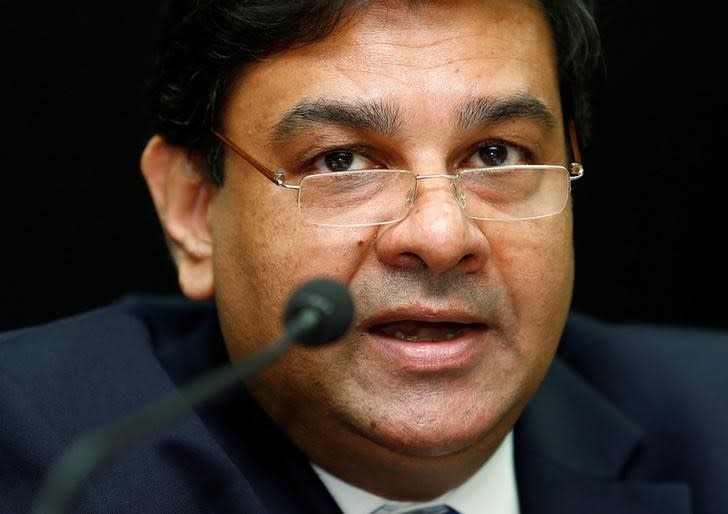RBI's new regime cuts rates
By Suvashree Choudhury and Rafael Nam
MUMBAI (Reuters) - India's newly minted monetary policy committee delivered a surprise 25-basis-point cut in the repo rate on Tuesday to 6.25 percent, as Reserve Bank of India Governor Urjit Patel presided over his first policy review since his appointment last month.
The latest cut extends an easing cycle that began in January 2015 under Patel's predecessor Raghuram Rajan and reduces the repo policy rate to its lowest since November 2010.
All six-members of the monetary policy committee - comprising Patel, two other RBI officials and three government appointed economists - voted for a cut.
The RBI said expectations that food inflation would ease in the months ahead had "opened up space for policy action."
"The decision of the MPC is consistent with an accommodative stance of monetary policy in consonance with the objective of achieving consumer price index inflation at 5 percent by Q4 of 2016-17," the RBI said in its statement.
The MPC, which was meeting for the first time, was introduced to make decision-making more transparent and more collegiate. Hitherto, the RBI governor had taken sole responsibility for deciding rates.
The last reduction was in April, and analysts had braced for a close vote this time. About 60 percent of analysts polled by Reuters had expected the central bank to keep the repo rate unchanged, while 40 percent had forecast a cut.
The RBI was seen as having room to act after consumer inflation eased to a five-month low of 5.05 percent in August, within the committee's 2-6 percent objective.
The central bank noted upside risks to inflation had subsided on the back of "strong sowing" and government measures to control food supply, allowing it to focus on an economy that was facing a "further slackening of external demand going forward."
In the March-June quarter economic expansion slowed to 7.1 percent annually from 7.9 percent in the previous quarter, though that still places India among the world's fastest-growing economies.
While the MPC has been given a mandate of "maintaining price stability," it must do so "while keeping in mind the objective of growth," according to the amended RBI Act.
Making his first public appearance since becoming governor, Patel credited the government for actions that had helped reduce structural constraints on supply that typically drive up inflation in India, including through investments in railways and roads.
"If I look at over the next seven to eight quarters, the government has introduced structural reform policies which is of course done to ease supply constraints," Patel told a news briefing.
"The proactive food management has played a crucial role in the past two years and will continue to play a crucial role in time to come."
MORE DOVISH?
The appointment of Patel, who had formerly been a deputy governor, was widely welcomed by investors, who expected the fight against inflation to be maintained.
Analysts, however, saw signs that the RBI's new regime might be willing to be more accommodative than Rajan, a former chief economist of the International Monetary Fund, who had helped drag inflation down from double-digit levels.
"The statement is definitely more dovish than the earlier policy regime," said A Prasanna, economist at ICICI Securities Primary Dealership Ltd in Mumbai.
"All this means there could be a scope for another rate cut by March-end."
The broader NSE Nifty was up 0.3 percent, while the benchmark 10-year bond fell 3 basis points to 6.75 percent. The rupee extended gains to 66.40 per dollar from 66.47.
Much remains unknown about Patel's stance on other important aspects of the RBI Governor's job.
Patel did not announce any major banking measures on Tuesday though he did propose easing rules on restructuring of stressed assets by lenders, under pressure to clean up balance sheets.
(Reporting by Suvashree Dey Choudhury and Rafael Nam; Editing by Simon Cameron-Moore)

 Yahoo News
Yahoo News 

